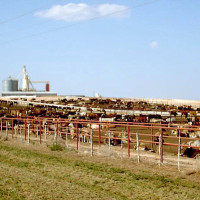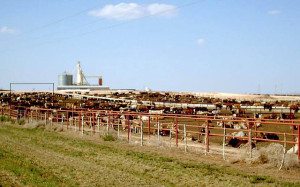

Health Benefits of Consuming Pasture- Raised Animals
 Posted by SLN Staff on Oct 9th, 2014 | Comments Off on Health Benefits of Consuming Pasture- Raised Animals
Posted by SLN Staff on Oct 9th, 2014 | Comments Off on Health Benefits of Consuming Pasture- Raised Animals 

A truly sustainable livestock farm requires that your animals roam freely and forage on naturally available feed in the pasture. It has also been found through studies that the quality of meat from grass-fed and naturally raised farm fed animals, are higher in nutritional value and contain higher amounts of nutrients. They also have higher levels of unsaturated fats, including Omega-3 and Omega-6 fatty acids. These are essential for our body because we cannot produce these fats; they have to be obtained from food.
In the past century, our diet has been going through rapid changes. Our diet today consists of a variety of synthetic foods. The food industry gets their food from various farm products. Many animals are fed grains and soy-based foods, instead of natural pasture grass. Animals are also fed GMOs, and fattening foods, to get quicker growth, or bigger mass, in a shorter time.
Our health is directly affected, not only by the food we eat, but also by the way our foods are grown. “It’s not only important what we eat. It also matters what the foods that we eat, ate”, says Authority Nutrition.
 Bill Kiernan, Director of GAI Research & Insight, writes in his article titled:Grass-Fed versus Corn-Fed: You Are What Your Food Eats that cows are ruminant and they are superbly adapted to converting grass into milk or meat. He also thinks that the health concerns long associated with eating beef, do not actually result from eating beef, but are due to eating corn-fed beef. In the same article, Bill says, “Seventy-five years ago it took a cow four to five years to reach a slaughter weight of 1,200 pounds. Today it takes 13-15 months, thanks to corn, antibiotics, growth hormones and protein supplements.“
Bill Kiernan, Director of GAI Research & Insight, writes in his article titled:Grass-Fed versus Corn-Fed: You Are What Your Food Eats that cows are ruminant and they are superbly adapted to converting grass into milk or meat. He also thinks that the health concerns long associated with eating beef, do not actually result from eating beef, but are due to eating corn-fed beef. In the same article, Bill says, “Seventy-five years ago it took a cow four to five years to reach a slaughter weight of 1,200 pounds. Today it takes 13-15 months, thanks to corn, antibiotics, growth hormones and protein supplements.“
, a former contributing editor at Gourmet Magazine, writes in his article titled: Feedlots vs. Pastures: Two Very Different Ways to Fatten Beef Cattle, “Raising cattle on pasture is inherently more challenging than fattening them on feedlots, but the results are worth the extra effort.” Barry was more concerned about the living conditions and welfare of beef cattle in feedlots. He is also critical about the diet animals receive at the feedlots.
Most of the beef that you buy from the market today comes from animals raised on feedlots, which are often overcrowded and fed an unnatural diet of corn, grains, or even worse, “by-product feedstuffs”. When cattle are suddenly fed a diet of corn, grains, and by-product feedstuffs, their digestive systems, which are made for eating grass, are extremely stressed. “They are also fed a daily ration of antibiotics” says Barry in his article.
Many of the feedlots feed animals based on corn or soy, which are not their natural diets, and do not make a balanced diet for beef or dairy cattle. Some feedlots and commercial cattle farmers are also known to feed “by-product feedstuffs” as well, which generally means waste products from the manufacture of human food (Eat Wild). You can surely imagine what the health effects will be, when animals are fed such foods, and also how it will affect our health when we eat food from farms that raised their animals on such foods.
In an article published recently, Science Daily said that according to the American Association for the Advancement of Science, “Grain-fed cattle provide nicely marbled beef. Yet, low-fiber diets can make cattle sick, while allowing harmful bacteria to proliferate”. A paper in the May 11, 2001 issue of Science Daily reports, “When cattle are fed grain, productivity is increased, but fiber-deficient rations can disrupt physiological mechanisms,” said James B. Russell of the Agricultural Research Service, U.S. Department of Agriculture in Ithaca, New York. (ScienceDaily)
 Fresh pasture grasses and dried hay are the best foods for ruminant animals.Food and medication you give your animals can and will affect our own health. The negative effects from industrial animal food production have far reaching consequences for animal health, the environment, and even human health.When animals are well fed with a natural diet, and well taken care of, they will grow naturally healthy and more productive.Hormonal treatments will not be necessary and antibiotics can be left to when absolutely necessary.
Fresh pasture grasses and dried hay are the best foods for ruminant animals.Food and medication you give your animals can and will affect our own health. The negative effects from industrial animal food production have far reaching consequences for animal health, the environment, and even human health.When animals are well fed with a natural diet, and well taken care of, they will grow naturally healthy and more productive.Hormonal treatments will not be necessary and antibiotics can be left to when absolutely necessary.
Have you tried our microgreen fodder system? Leave a comment in the comment box, if you’d like to learn more about the DIY microgreen feeding system.
Source: Sustainable Livestock Nutrition





